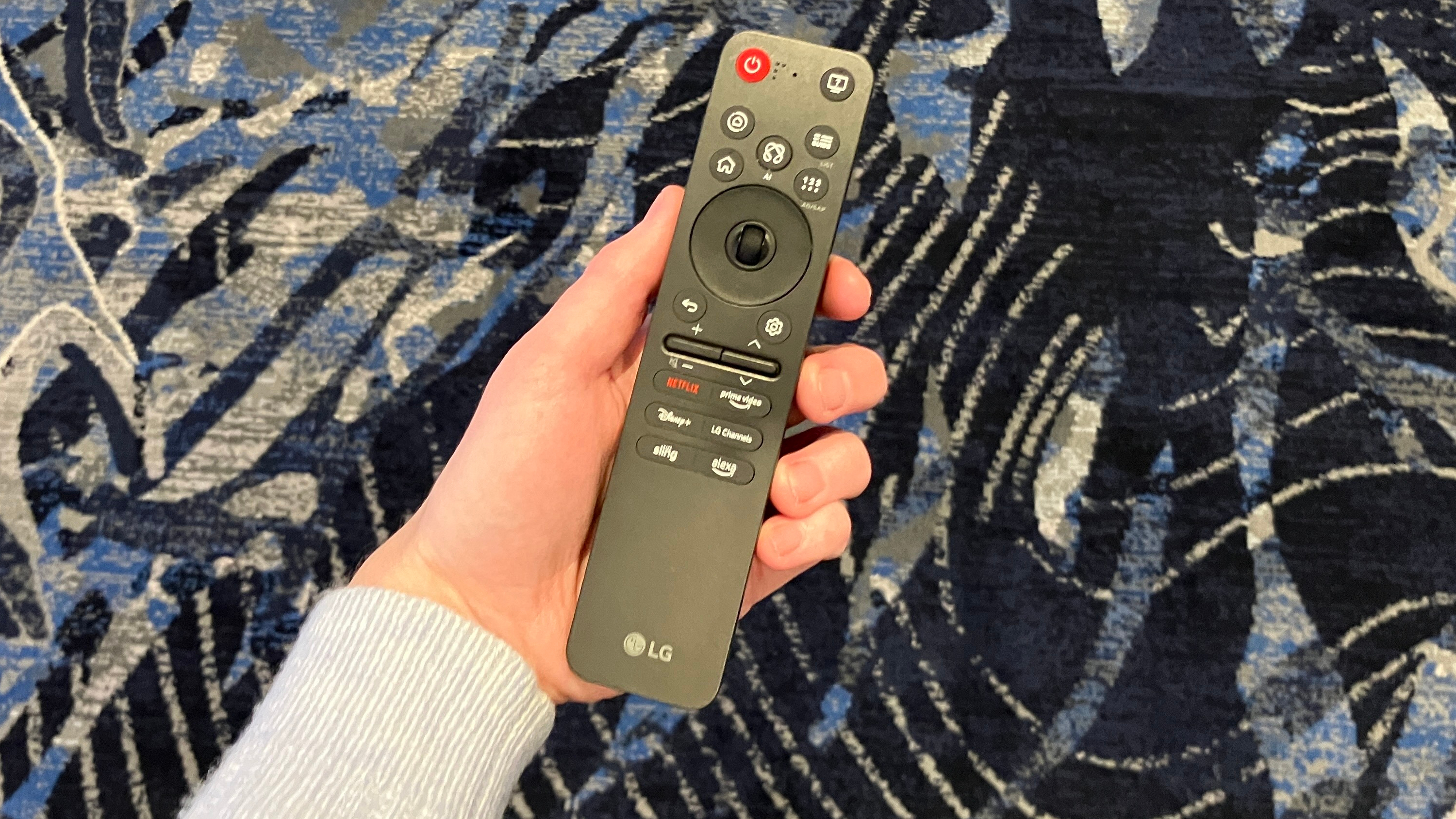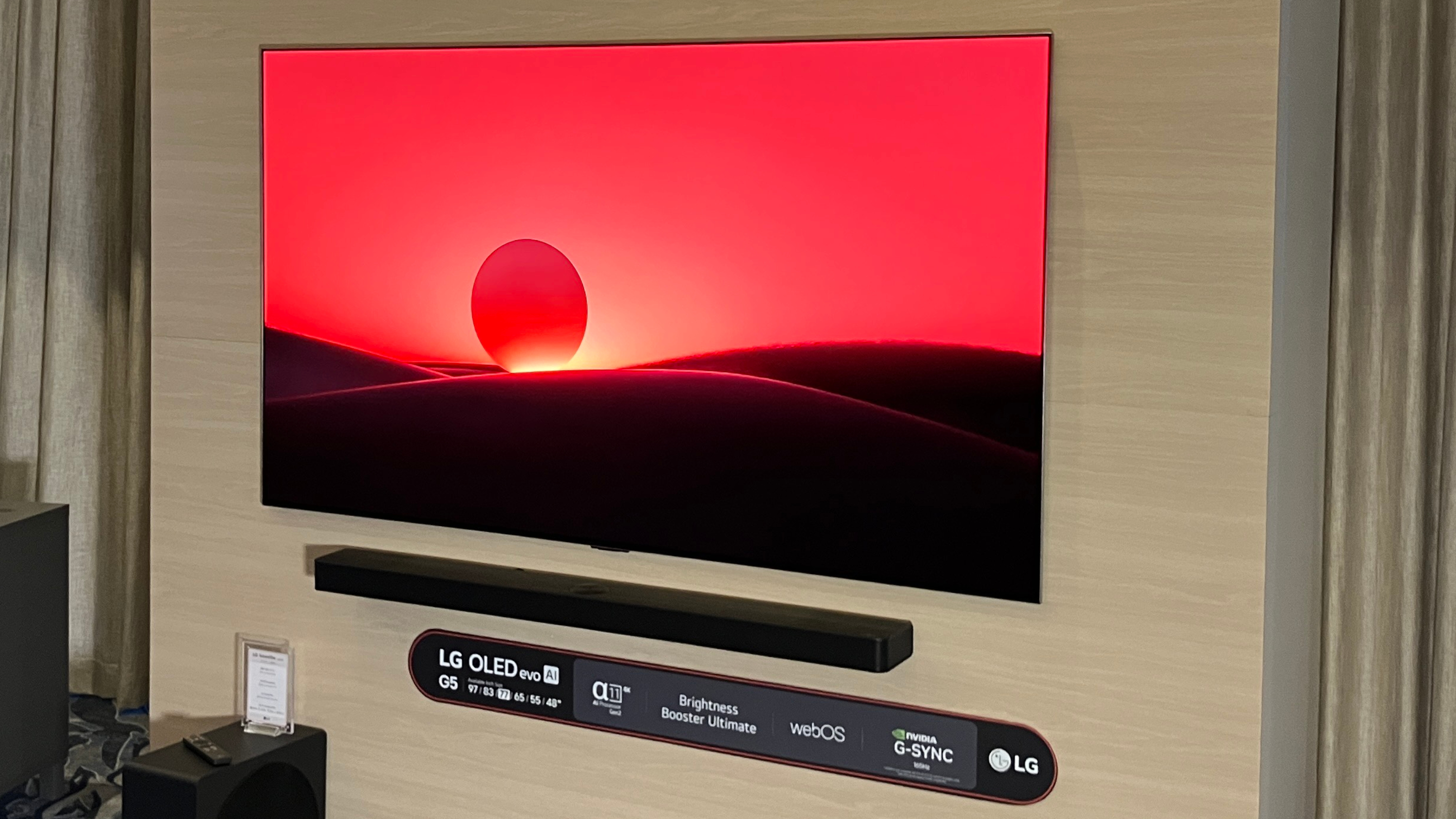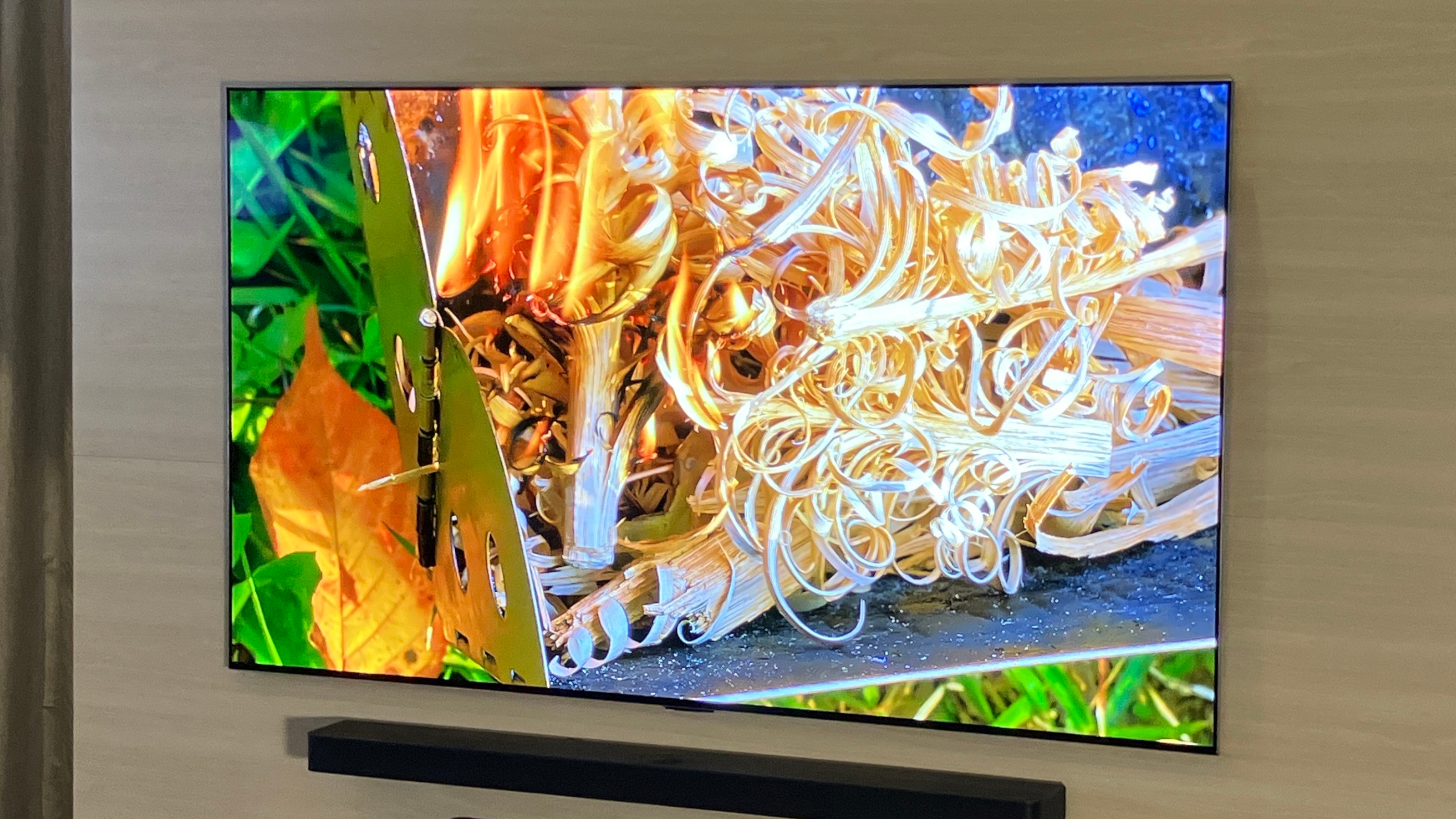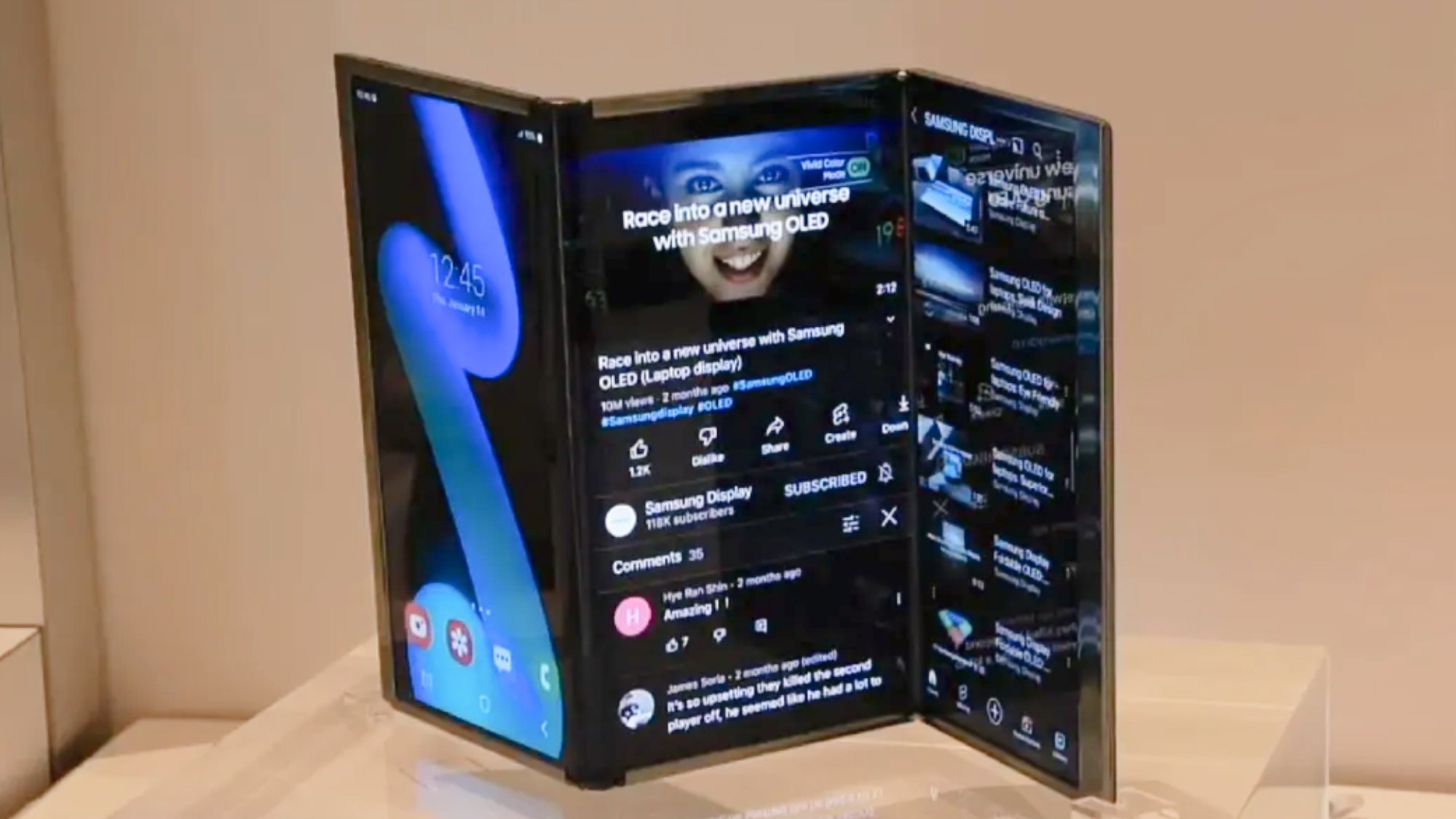Early Verdict
The LG G5 is one of the most impressive TVs I've seen at CES 2025 so far, and it's clear to me that it hasn't lost a step in shedding LG's MLA display technology. It's also loaded with important performance- and gaming-related features, just like its predecessors. The G5 is poised to lead the OLED pack this year, but it's facing some tough competition. We'll have to see how it stacks up against the rest when we finally get our hands on it for proper testing.
Pros
- +
Brighter than the G4
- +
Full HDMI 2.1 support
- +
Elegant design
Cons
- -
Stand isn't included
Why you can trust Tom's Guide
LG kicked off its appearance at CES 2025 with a hotel suite full of shiny new toys. Included in the showcase was its OLED evo TV lineup for 2025, led by the top-of-the-line LG G5. It's the follow-up to the LG G4 OLED, one of the best OLED TVs of 2024.
I was lucky enough to spend some time with this impressive TV, and right away I set out to answer some critical questions. Most importantly, can the G5 really outshine last year's G4 without the hardware that made its predecessor so impressive?
Let's get into it.
LG G5 OLED TV: Sizes, pricing and availability
Not much has been announced about the LG G5's impending release, but LG's OLED TVs typically arrive in early spring — sometimes shortly thereafter. We also don't know anything about the pricing of the G5 series as of this writing.
| Size | Price |
|---|---|
| 48" | TBA |
| 55" | TBA |
| 65" | TBA |
| 77" | TBA |
| 83" | TBA |
| 97" | TBA |
All sizes in the G5 series feature LG's Brightness Booster Ultimate except the 48- and 97-inch models.
Since LG is removing some of the display hardware that allowed last year's G Series TV to reach HDR highlight brightness levels in the 1,400- to 1,500-nit range, I can only assume that the G5 models equipped with Brightness Booster Ultimate will be the models that meet (or exceed) last year's peak brightness benchmarks. We'll need to test these models properly in order to figure that out.
LG G5 OLED TV: Specs
| Sizes | 48", 55", 65", 77", 83", 97" |
| Resolution | 3840 x 2160 |
| HDR | Dolby Vision / HDR10 / HLG |
| Refresh Rate | 165Hz |
| Audio | TBA |
| Inputs | 4x HDMI 2.1 |
| Smart TV | webOS 25 |
LG G5 OLED TV: Design

There are two big changes for the G Series' design this year, and they involve the remote and the stand.
As someone who kindly asked for an update to the LG Magic Remote, I'm happy to report that LG has done just that for 2025. The remote still features the motion-activated controls (which still can't be disabled via the TV's settings), but it's slimmed down and features fewer buttons. I like the way it handles, but I'm still holding out hope for a firmware update that allows us to toggle the motion controls permanently.
You might remember that LG shipped certain sizes of the G4 with a stand included in the box, but apparently it's walking that back in 2025. From now on, all LG G5 models will ship without a stand, further emphasizing its status as a TV designed for wall-mounting.
That's a bit of a bummer, as I appreciated the flexibility that the G4 offered. Nevertheless, the G5 looks stunning on the wall with incredibly narrow bezels and a premium, metallic finish along the edges of the panel.
LG G5 OLED: Performance and features

As mentioned, LG has shelved its Micro Lens Array (MLA) technology. For the last few years, MLA display tech has allowed the G Series to compete in a field of ever-brightening quantum dot-equipped OLEDs from rival brands like Samsung and Sony.
Upon learning that LG had seemingly ditched its secret sauce, I became worried about the future of the G Series OLED. But I shouldn't have been.
To my eye, the LG G5 is every bit as bright as the G4, and LG representatives assured me that it's even brighter. Frankly, it was hard to tear myself away from the thing. I kept waiting for an HDR trailer for Apple TV's "Wolfs" to loop back around so I could once again marvel at the tiny points of searingly bright light poking through Brad Pitt's pupils.
It was hard to tear myself away from the LG G5.
And, while it's hard to get a sense for color accuracy on the showroom floor of a trade show (an environment that almost always compels TV brands to make use of their wildly inaccurate Vivid picture modes), I can say that the reds, greens and blues were leaping off the G5 in a way that called to mind the G4.
In my travels, I've often come across LG OLEDs that exhibit a subtle pink- or green-colored tint whenever bright, white-colored content is viewed from an off-axis viewing position. This does not seem to be the case with the G5 after initial viewing.
One neat gaming-related update is an increase in native refresh rate. The G5 sports a 165Hz refresh rate, up from 144Hz last year. It pairs this feature with a full suite of HDMI 2.1 inputs, Dolby Vision support, and many AI-based features designed to enhance the TV's personalization and picture quality. I'm skeptical about the inherent usefulness of many of these AI-related features and I'm excited to take them for a spin later this year.
LG G5 OLED TV: Outlook
The most important thing the G5 had to do was be as good as last year's installment. And, while I obviously can't speak to the finer details without proper test results, I'm confident that this TV will succeed in that endeavor.
Folks who have no interest in wall-mounting the G5 will likely be disappointed to learn that they'll have to spend a little more on a stand, but LG seems confident that the majority of its buyers will want to wall-mount this TV.
As for the TV's ballyhooed AI-based features (like an AI Chatbot that offers onboard tech support), let's just say I'm skeptical about their usefulness. We'll know more when we're finally able to put the G5 through its paces later this Spring.
More From Tom's Guide

Michael Desjardin is a Senior Editor for TVs at Tom's Guide. He's been testing and tinkering with TVs professionally for over a decade, previously for Reviewed and USA Today. Michael graduated from Emerson College where he studied media production and screenwriting. He loves cooking, zoning out to ambient music, and getting way too invested in the Red Sox. He considers himself living proof that TV doesn't necessarily rot your brain.

